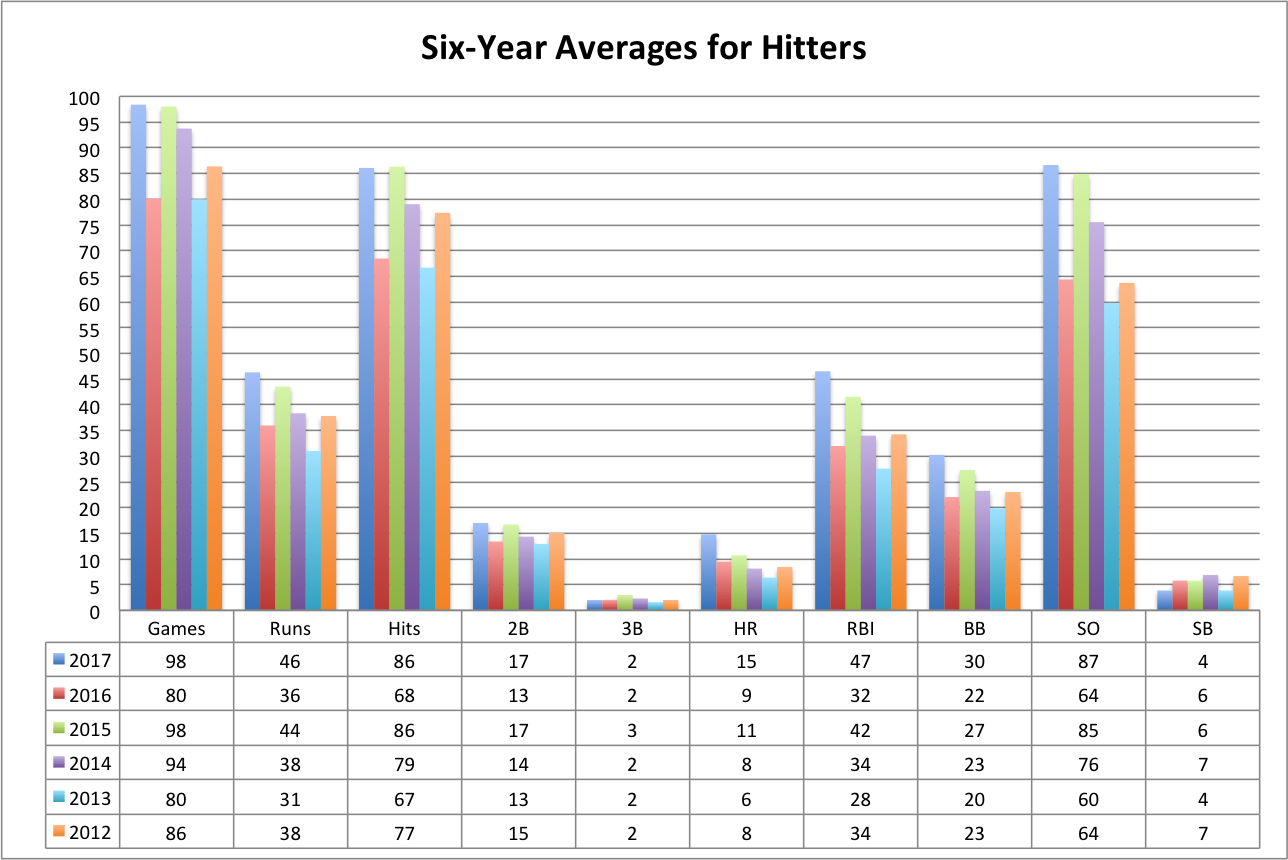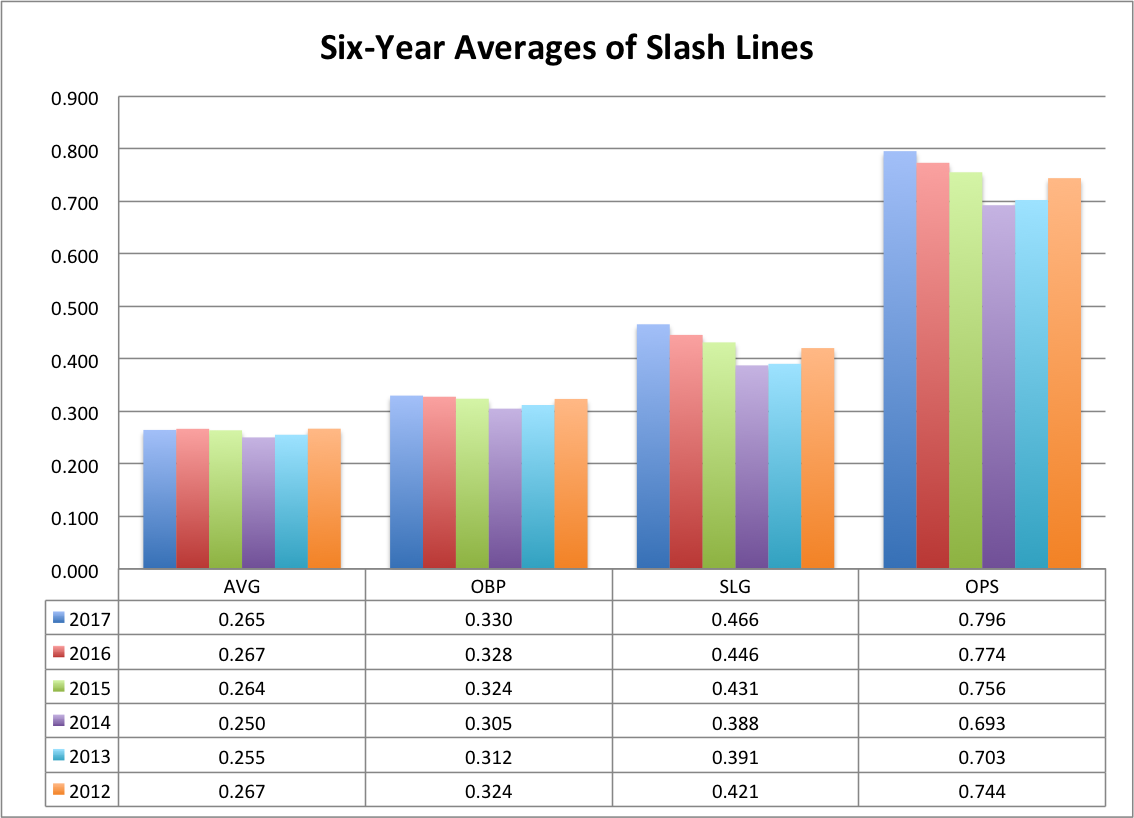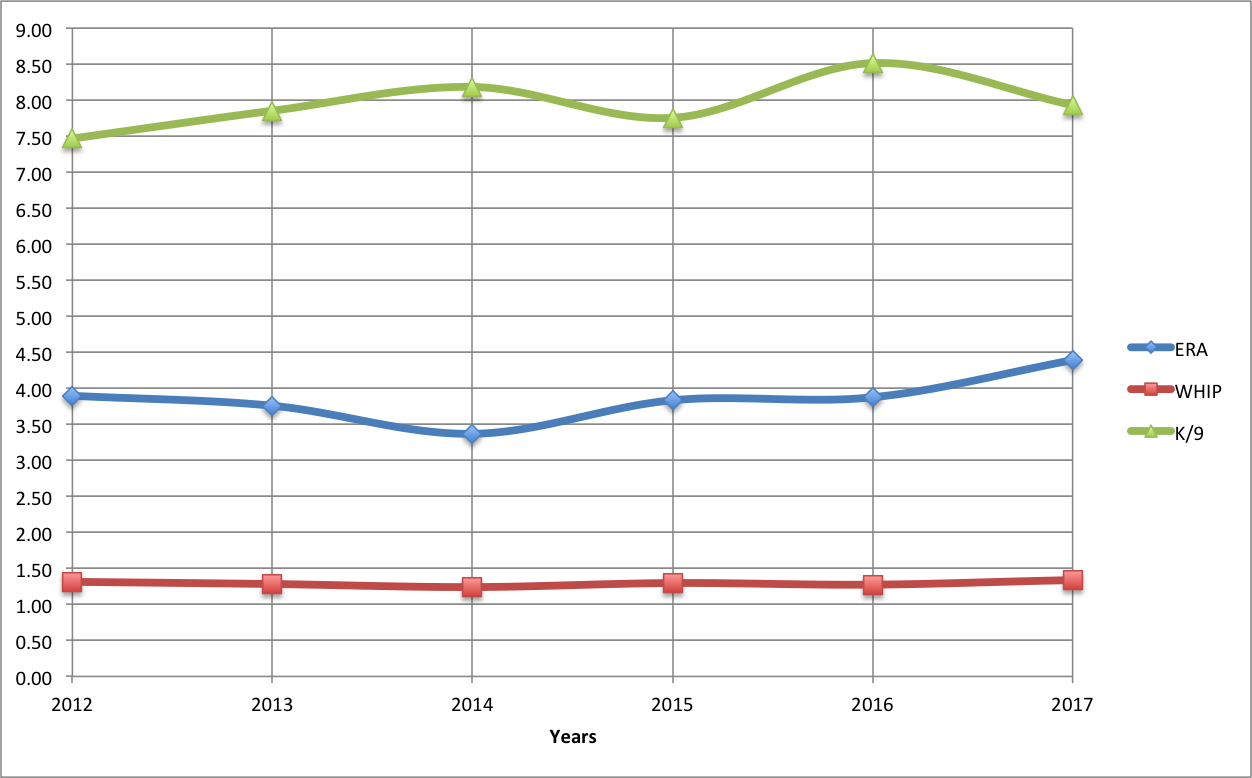Christmas was still only just a few short weeks ago, and everyone, at least the kids, are still enthralled with their brand new, shiny toys. Getting excited for hot new items is natural and keeps you young at heart. The problem comes when that young at heart feeling meets spring training and your fantasy baseball draft.
Every year there is hype about the new class of rookies that will be taking supposed big roles for their respective teams. And every year fantasy owners buy in to the hype. But what happens to those owner’s teams? That’s the point of this article; to help make you less likely to fall for the hype and draft smarter.
Over the last six years there have been an average of 85 rookies each year to be called up (using mlb.com rookie statistics) and a number of those guys have been significantly hyped coming into the season. To the point that owners can feel like they missed the boat on not drafting them, until the results are seen on the field that is.
Hitters
This past season may very well be a turning point in this discussion, given the outstanding performances from around the league and namely Aaron Judge and Cody Bellinger who were at a whole other level. With 2017 talked about, let’s set it aside for the moment, since it’s still unknown whether it’s a blip or a trend. Getting back to previous years, the data shows the stats hold relatively steady across the other five years.

*These numbers are averages of rookie numbers each year from mlb.com
For the most part rookies have played just over half a season in the last six years, which isn’t bad, but why spend the draft capital you’d have to spend to get some of these guys when you can take a proven player in the same spot? The counting stats reflect players that play half a season as well. Only twice in the last six years were there 10 or more guys that scored 50 or more runs, and that’s out of 35 or more guys per year. That’s not a promising sign for fantasy production. Aside from 2017 and 2015, home runs averaged less than 10 per guy. In a time that saw 110 players hit 20 or more homers in 2017, why pick a guy that may not crack double-digits? Just as you would assume, RBI totals aren’t great either. Three of the last six years’ rookie classes produced at least 10 guys who drove in 50 or more runs. But again that’s out of at least 35 guys per year. So overall we’re talking about MLB average counting stats for a half a season from a guy you were hyped about heading into the draft.

*These numbers are weighted averages of rookie numbers each year from mlb.com
The slash lines for those some rookies however, have been steadily trending upward over the past four years. The AVG category has climbed from .250 to .265 from 2014-2017 with 2016 reaching .267, while OBP, SLG, and OPS have all reached their highest points in 2017. While this is encouraging to see a trend like this, keep in mind that they are weighted averages and there is still a hefty portion of the class that hit under those marks, which aren’t eye-popping to begin with.
Yes in each class there are studs that should be drafted at some point, but again should not depend on them to win you a league or even get you into the money. Judge, Bellinger, Trevor Story, Trea Turner, Corey Seager, Jose Abreu, and Mike Trout are all exceptions to the rule of not depending on rookies. In 2017, 12 of the 40 offensive rookies had years putting them at MLB average or better, which computes to 30% of the class. The next three years produced numbers more in the 20% range and 2013 was the low point at just 10.5% of the 48-member class being MLB average or better. Getting the picture of how hard it is to pinpoint exactly which ones will produce and play and which won’t? Typically you have a 1-in-5 chance of guessing right, so why try?
Pitchers
While the discussion for the hitters depends on which stats you cherry-pick from, that’s not the case for pitchers. There is just simply no reason to come anywhere near relying on, depending on, or considering rookie pitchers anywhere except the back part of the draft. Just like with offensive guys there will always be the big name pitching prospects coming up who have lit up the minors, but that’s just it, it was the MINORS not the majors. It’s hard to predict what exactly they will do when they get to the show, let alone the fact that the team may use them in the bullpen instead of rotation, or in middle relief when you expected them to be a closer. In either case, it’s not ideal. Let’s take Lucas Giolito in 2016 with the Nationals. He was a top-prospect in baseball, some had him as number one, but he came up and was atrocious for the final month. Then he goes to Chicago and gets lit up quite a bit in Triple-A but they call him up when they have a need in the rotation, and low and behold he posts a 3-3 record with a 2.38 ERA, 0.94 WHIP and 34 Ks in a seven-start span over 45.1 innings. Go figure.
The counting stats (Wins, IP, and Ks) have stayed in a very tight range over the last six years on average with 5-to-6 wins expected, 75-100 IP, and 65-90 strikeouts. All of those are low to begin with, especially to depend upon for an active roster spot. But it gets worse from there.

*These numbers are weighted averages of rookie numbers each year from mlb.com
The chart makes it patently obvious. ERA has been on the rise, and not a small one at that. Since 2014’s 3.37 mark on average, it has risen more than a full run to 4.39 in 2017. That’s an enormous rise in four years, especially since it’s jumped by nearly a half a run twice in that span (2014-2015 and 2016-2017). Also in that span WHIP has jumped from 1.24 in 2014 to 1.34 in 2017, which is also a decent-sized increase. Strikeout rate looks more like the bunny hills on a roller coaster than a stat you can rely on each and every year, which again makes my point.
Drafting rookie pitchers is just as much a shot in the dark as it is with hitters. The best year in the past six for draftable rookie pitchers turned out to be 2014 with seven viable arms in a class of just 25 pitchers but once again that’s still hovering just over 25% of the group. So it’s still a crapshoot. In terms of rookie closers, the numbers are even worse. In the last six years total there have been eight pitchers with 15 or more saves in their rookie campaigns. And only three of those posted 20 saves or better. Are we getting the point at this point?
Just to be clear, You should not be totally against drafting rookies on either offense or pitching, but anecdotal and hard data combine to show you that in general they simply don’t produce enough to be counted on for much of the year and even if you take the time to look at the guys who are supposed to come up, it’s still a crapshoot as to figuring out who will do what and when. Aaron Judge came up at the end of 2016 and was terrible. Just horrendous. He batted .173 in the small sample size, and then what do you know? He posted one of, if not, the best rookie year in baseball history in 2017. Did anyone see that coming? Not many. So if you want to draft rookies highly or even to be counted on in the middle of the draft, be my guest. Just know the inconsistency and middle-of-the-road production you are most likely in for while trying to win that championship.

